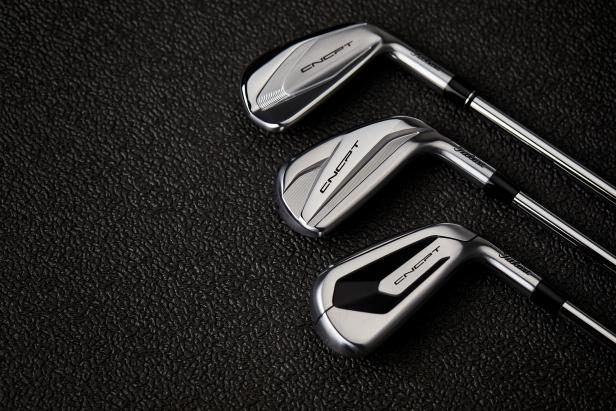Products You May Like
When a single iron—not the entire set—costs as much as a driver, it better be made of something special. And we’re not talking gold bullion. The three irons from Titleist in its CNCPT series all feature that something special, a so-called “super metal” face that’s constructed of an alloy used on helicopter rotors and missile fins.
That hot face alloy, which the company is still not disclosing, debuted in last year’s CNCPT irons and now will be the foundation in two new CNCPT irons, all featuring hollow-body constructions. The CP-02, which carries the appearance of a compact muscle back blade, stays in the line and is now joined by the CP-03, a slightly larger but still a players-shaped, minimal offset blade design, and the CP-04, the most game-improvement-y of the trio with a larger size and more offset.
For perspective, the CP-03 is similar in size to the AP2 iron that was a stalwart on the PGA Tour, while the CP-04 is similar to the previous generation’s CP-01.
“This is really about how can we go to the next level of performance by having all the constraints taken off of us and something that we can make more than two of,” Dan Stone, Titleist’s head of research and development said at the time.
Four years later the line is pushing performance with the use of this secret super metal forged in an L-shaped face that gets ultra thin. On the smallest head, the CP-02, the face is just 1.75 millimeters thick or about the thickness of a quarter. That’s thinner than the faces in Titleist’s current mainstream iron lineup, but that’s only part of the story, said Marni Ines, Titleist’s director of iron development.
“We’re on the journey to not only design the ultimate iron—but actually figure out how to make it,” he said of the alloy which he called “difficult to obtain and challenging to implement into the manufacturing process.”
Even more impressive, both in terms of performance goals and manufacturing challenges, is the multiple material aspect of the design, specifically the amount of high-density tungsten in these relatively compact heads. Each iron in the series uses about the same amount of tungsten inside the heel and toe (over 100 grams in the long and middle irons) that’s found in the company’s super-oversize, wide-soled T400 game-improvement iron. In other words, imagine a super-charged face on a players iron shape with the off-center hit stability of an iron aimed at those trying to break 100.
The spread of lofts across the three irons now makes mixed sets an easier proposition. The most game-improvement CP-04 features the strongest lofts (generally two degrees stronger than the CP-02 and one degree stronger than the CP-03), but it’s easy to envision a scenario where all three irons could be used to make up a single set.
The CNCPT irons are available for fittings now. They will retail for $500 per club.


